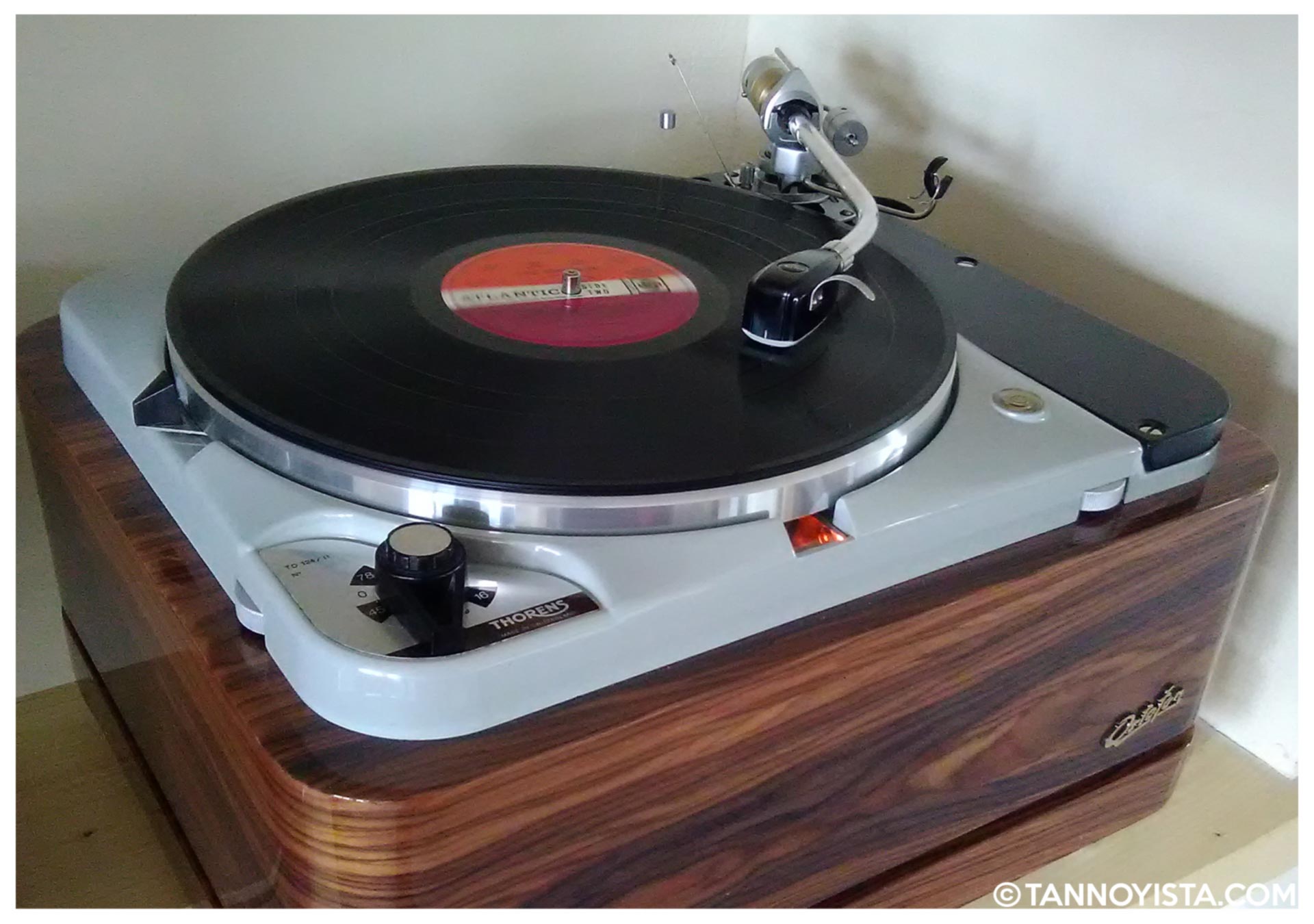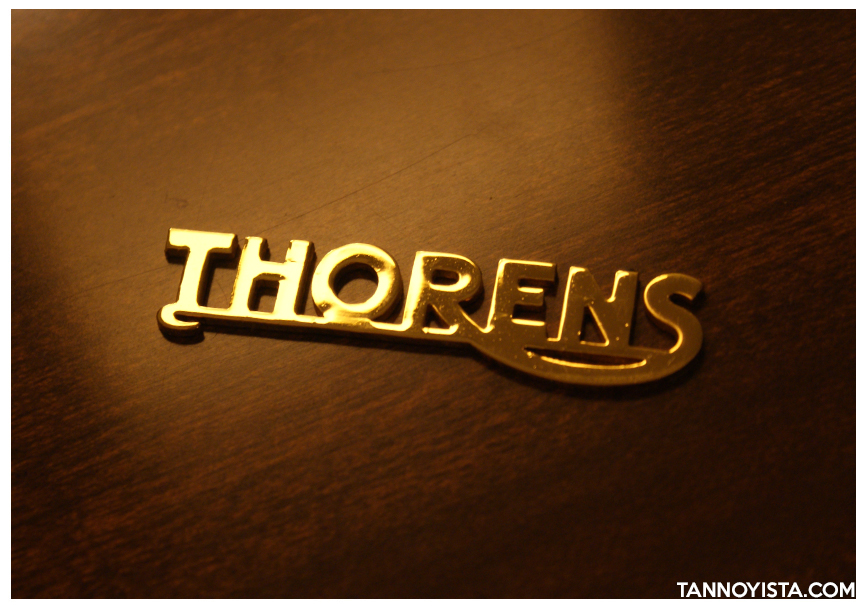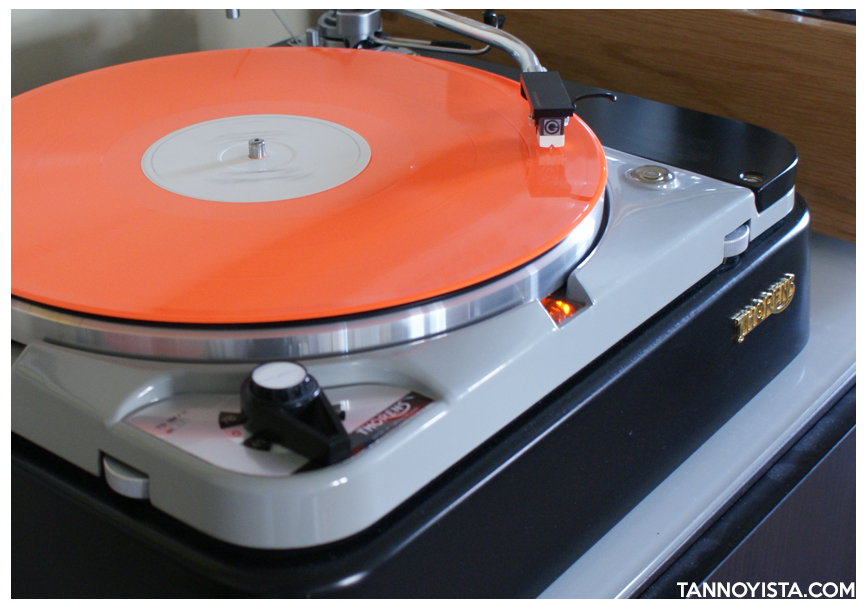Discover more about the Thorens TD-124 MK2 Turntable - A true 1960s classic which keeps on giving.
The Thorens TD-124 is one of the most classic turntables. It has a wonderful sound and a celebrated history. This review is a look back at my experience of owning the TD-124.

| Contents |
|---|
|
|
|
|
|
|
|
|
Needless to say, this little deck consistently captures the hearts of many, including myself.
About the Thorens TD-124
The TD-124 for me has to be one of the cutest decks. It has a very compact footprint and the build quality is outstanding.
Like a decent Studer reel-to-reel deck, the chassis is cast so it has a decent amount of weight to it. My deck was bought around 1965/66 by an engineer who helped fit out the Radio Caroline craft which was originally anchored off the coast of Essex, UK in 1964.
The previous owner, Bob Gale said: "I bought the deck after a re-fit of the station. It was going to be fitted but the powers that be had other ideas. It was in the stock room for around 6 months before I was able to buy it. Back then, it was quite expensive and I wasn't flush enough until I did another BBC job at a local station in Slough, UK.
We hardly used bases back then, most were planted into the sound desk. DJs back then kept them running full time with Snooker table felt like a slipmat. The rubber mat was thrown away. They used to que up, hold the record and then release to play.
Tonearms were normally the standard Thorens arms but some were fitted with SME. The standard arms were good as they were generally more durable."
Radio Caroline used a number of decks and the TD-124 was one of them. In fact, most radio stations used the TD-124 including the BBC.
My TD-124 was a MkII. That is it had a non-magnetic platter as opposed to the original which was cast iron.
My previous deck was a Michell Gyro SE. It was a beautiful deck. I really enjoyed it but when I had the chance to own a piece of broadcasting history, I jumped at the chance. The sonic differences between the Gyro and the TD-124 were quite different. The Gyro had very precise timing, which was great, in comparison, the Thorens had a more laid-back feeling, more organic with an exciting feel.
When I bought the Thorens, cosmetically, it was almost untouched, in mint condition. But mechanically, it wasn't in great shape. It wasn't worn out, but neglect of use was its main problem. Everything needed lubricating. Although the motor was nice and quiet, it suffered from a speed drift. Reading up about this problem on the net, it was suggested that a full strip-down was required. So, I set to work.... big mistake. EEK!
There's a knack to those motors. My advice would be this... Send it to a specialist.
Back in 2010/11, there was only one place to send it and that place was Schopper, Switzerland.
My TD-124 underwent a full rebuild. All of the mechanical linkages were removed and cleaned, and the sintered bushings were replaced on the idler and the main platter spindle. The motor was also totally refurbished. When Schopper re-furbish the motors, they constantly run them in for 48 hours to check for any excess noise.
Schopper has some amazing experience with the TD-124 and I can totally recommend them.
When the turntable returned it ran like a dream. Although it was very quiet, it wasn't totally silent. This was because of the stepped pully bearing but Schopper supplied a modification for this which consisted of two washers which are placed underneath the pully. After that mod, it sounds amazing.
Unlike the Garrod 301/401, the 124 is a belt-driven idler. But the belts last and last. I only changed the belt a few times in all the time I had it and it's really easy to do too! It's recommended every 18 months but mine lasted much longer.
I found that the best belts were from Schopper. I tried a Thacker belt but it was too tight and not as quiet.
Here are some pics from when it returned from Schopper.

Cartridges
Ortofon Rondo Red MC:
My first cartridge on the Thorens TD-124 was the same cartridge I had on my Michell Gyrodeck SE, the Ortofon Rondo Red MC.
What can I say, if coupled with a very good MC head amp, the Rondo Red is a really nice cartridge. I wanted to try other Rondo range at the time but because the Thorens was a vintage deck I decided to go down the vintage route.
Shure V15 Mk3:
So the next cartridge was a Shure V15 Mk3. The cartridge of choice from Thorens back in the day and recommended by SME.This together with the SME 3009 S2 (non-improved) tonearm was a very nice vintage combination. I also had the JICO stylus fitted which was so much better than the original. The only problem I found with the V15 was that is was a little tame. Although the resolution, air and space were amazing, I like to shake my ass so it was time to move on to something with boogie.
Goldring G800:
The Shure ticked a lot of boxes but as time went by, I was tempted with an early Goldring G800 fitted with an updated stylus carried out by NWA (North West Audio) here in the UK.
Some consider the G800 as a hammer of a cartridge, some call it an old nail but this is not the case I can assure you. The build quality on the early versions included Alinco magnets and although it was a staple broadcast cart, if you want something with 'oomph', look no further. The only thing I'd recommend is to get the stylus updated. Standard styluses are great but you do need that edge of refinement.
The G800 could really boogie. A well-presented soundstage, nice and balanced. It had everything I wanted. But, another Goldring was also tempting.
Goldring G1042:
The G1042 was my next choice and just like the G800, it was a really nice match. It had lots of 'bottom' and great timing. The only thing it lacked was the air and space as the Shure/Jico combination.
Ortofon SPU GT:
My cartridge of choice with the TD-124 and SME 3009 was a vintage SPU GT. This beautifully crafted cartridge brought it all together. It had a very sophisticated way of reproducing the sound. Not harsh, not soft and the bass was voluptuous.
The SPU was my final cartridge for the lovely Thorens TD-124.

Making modifications to the TD-124
The great thing about the TD-124 is that it's such a well-catered-for deck and there are lots of places that sell modifications. Here are some of the mods I found to be the most beneficial.
The Plinth
One great upgrade in looks and sound was a heavy solid wood plinth. I originally had a Schopper plinth but the chance of having a plinth made with a piano gloss finish was too tempting.
Using a solid design as opposed to the standard open type had a massive sonic upgrade. Grounding the sound and keeping everything tight and focussed.Mushrooms
...or the absence of them. I found that securing the turntable to the solid plinth and removing the rubber suspension mushrooms worked best. Once the deck is secured properly, the sound becomes even more impressive.
You lose the ability to level the turntable using the side adjusters but you simply adust the base of the plinth instead. With the solid plinth, I also had made a sub-platform but I found this made no discerning improvements in sound.
Motor suspension
Over the years I have updated the motor suspension grommets too. I tried all types of grommets but the ones from Hanze Hifi were the best. The motor suspension systems Hantz HiFi manufactures are springs rather than rubber. A huge upgrade bringing that noise floor as low as I could get it.
Idler wheel
Another great upgrade was to have the original idler wheel re-conditioned. Re-manufactured idler wheels are simply nothing like as good as the original ones. To remove the glaze on a worn idler is a great idea but taking it a step further was to precisely skim it so its edge is perfectly flat also makes a great improvement.Ammonite Acoustics here in the UK did this job for me. To clean the idler, the motor pully and the stepped pully I recommend using a magic eraser. It's simple, and quick and makes maintenance even easier. Simply place the eraser on the edges as it's running for 30 seconds.
Since 2010, lots of upgrades came out for the 124. Some were good and worthwhile but some truly awful and simply not worth thinking about. So if you are lucky enough to own one of these very special decks, be careful and don't believe the hype with some upgrades.

Summary
The Thorens TD-124 MKII is a wonderful turntable. The way it performs and reproduces music is uncanny. Its build quality even now is outstanding. It can sound a little clunky but once refurbished it's a very reassuring 'Clunk'.
These decks do need initial attention. A bit of maintenance is needed every 12 to 18 months. It's nothing major and can be carried out by anyone. It's very simple to do.
If anyone is interested in buying one today. Have it serviced properly by a specialist and it will last you a lifetime. The Thorens TD-124 is an audiophile beauty that is wonderfully addictive.















 All the photographs and images on this site are copyright.
All the photographs and images on this site are copyright.
0 comments